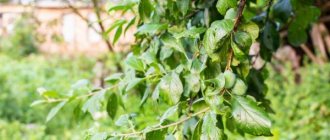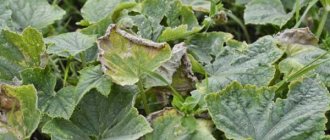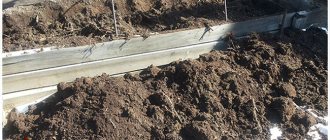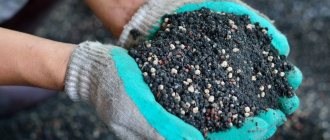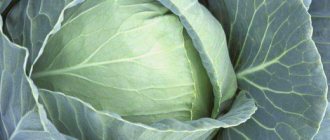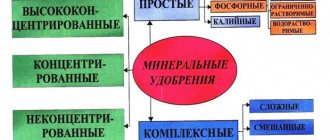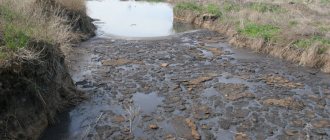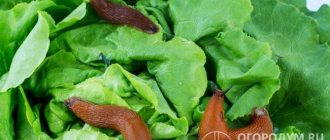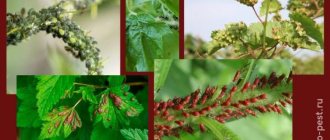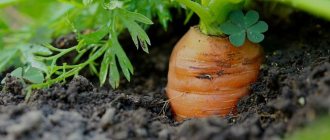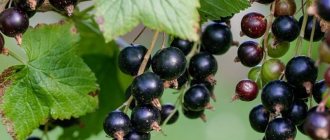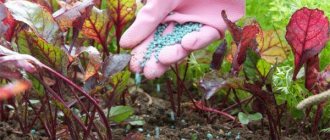Onions are a healthy, tasty and irreplaceable vegetable in cooking and folk medicine. It grows in every summer cottage and garden beds. It does not have any special requirements for cultivation and care.
But not everyone succeeds in getting a large harvest of large bulbs. It's all about timely and correct feeding. After all, some fertilizers are necessary for growing green mass, while others are necessary for bulb growth. It is undesirable to use some, while plants simply cannot do without others.
It is very important to add the necessary nutrients on time and not to overfeed the crops, because not only the size of the crop, but also the duration of its storage during the cold period will depend on the quantity and quality of fertilizing.
Rules for applying fertilizers for onions
During the entire period of growing onions, fertilizing is applied three to four times:
- for growing greenery (at the initial stage of growth);
- to form a turnip;
- for bulb growth.
In summer, two feedings are done with an interval of two to three weeks. The best time to add nutrient solutions and mixtures is early morning or late evening.
At temperatures above twenty degrees Celsius, it is not recommended to apply fertilizers, as they can evaporate or cause burns to plants.
Fertilizers in granules can be dissolved in water, and then applied to the soil, or scattered over the surface of wet soil, and then embedded to a depth of six to eight centimeters.
- It is not recommended to use fresh manure as a fertilizer , because it will negatively affect the size and keeping quality of the crop.
- You should not use only organic fertilizers for onions , since they only promote the growth of greenery, and the bulb itself increases slightly in size.
The effectiveness of any root feeding is possible only when applied to moist soil. After applying fertilizers, it is recommended to loosen the soil around the plants.
A lack of nutrients is not as dangerous for onions as their excess.
If solutions and mixtures get on crops, it is recommended to sprinkle them with a watering can to wash them.
Fertilizing the soil when planting onions in the spring
Fertile soil allows seedlings to fully grow and develop immediately from the moment of planting. The soil has been prepared since autumn. The choice of fertilizer depends on the soil itself, its fertility and density. Any fertilizing is applied during digging; usually the soil is dug up to the depth of a spade bayonet.
How to fertilize the soil when planting (per 1 sq. m):
- Add sand (9 kg), humus (6 kg), peat (5 kg), and urea (15 g) to heavy clay soil.
- Loamy soil is fertilized with humus (6 kg), urea (15 g), superphosphate (40 g), peat (6 kg).
- Poor peaty soil is enriched with superphosphate (50 g), humus (6 kg), sand (10 kg), and urea (8 g).
- Loamy soil (10 kg), humus (5 kg), lowland peat (5 kg), nitrophoska (15 g) are added to sandy soil.
Most often, summer residents choose superphosphate. This is the most popular fertilizer and is excellent for this crop. When adding compost or fresh organic matter, there is a risk of weeds appearing in the spring.
How to feed onions to get large heads
In June, onion heads grow up to four centimeters in diameter and the amount of nitrogen must be reduced, but potassium and phosphorus are very necessary for plants. These two useful elements not only contribute to the formation of strong and large bulbs, but also affect their immunity, which is of great importance in the length of storage of the crop.
Bulbous turnips ripen faster and become denser in structure. During this period, it is recommended to use mineral, organic and mixed fertilizers.
Mineral fertilizers
Useful supplements with minerals will bring the expected effect only if the instructions are strictly followed, without exceeding the specified volume of fertilizers. Typically, for every square meter of land area, four to five liters of solution with minerals are added.
Options for nutrient solutions based on a large bucket of water (about ten liters):
- superphosphate and the drug “Effekton - 0” - two tablespoons of each (or only superphosphate);
- ammonia - three large spoons;
- sixty grams of superphosphate, thirty grams of ammonium nitrate, twenty grams of potassium chlorine (possible without nitrate);
- one large spoonful of ammonium nitrate and coarse salt, two to three crystals of potassium permanganate;
- urea (one large spoon) and “Vegeta” - two spoons.
The universal preparations “Agricola - 2”, “FASCO for onions and garlic”, “Vegeta”, “Gera”, “Zdraven”, “OMU for onions and garlic” (according to the instructions on the package) have proven themselves well.
Organic fertilizers
Organic fertilizers are not so aggressive to vegetable crops and, unlike chemicals, only benefit the plants.
- Herbal infusions based on dandelion, nettle, and any weeds are prepared as follows: a large container is filled with grass about sixty to seventy percent, filled with water, pressed down with a press and left in a warm place for three days to infuse. After this, filter and add one glass of fertilizer for every five liters of water. Used for application under the root.
- You can prepare an infusion of one hundred milliliters of slurry and five liters of water or one hundred milliliters of chicken manure and ten liters of water with the addition of five grams of ammonium nitrate. Leave for five to seven days.
- The third part of a large bucket is filled with weeds or any grass, poured with three liters of water, ten grams of fresh yeast or a tablespoon of dry are added and left for three days in a warm place. Before use, strain and bring the volume of the solution to ten liters by adding warm water. Use for watering.
- To prepare a nutrient solution, add five hundred grams of fresh bread, raw yeast and freshly cut grass to a large container with ten liters of warm water. Infuse in a tightly sealed container in a warm place for two days, use for watering.
Folk remedies
“Folk” fertilizers are usually distributed among summer residents and gardeners after receiving a huge and high-quality harvest more than once. The most popular ingredients in such recipes are charcoal, eggshells, chicken or fish bones, and bone meal. They contain potassium, calcium, phosphorus, nitrogen and other useful components that are important for the growth of bulbs.
For example, for irrigation , an infusion is prepared from one glass of ash and ten liters of water. You can also feed the plants with dry ash. To do this, it is scattered over the entire surface of the onion beds (near the plants), and then watered abundantly.
For root feeding, it is recommended to prepare a solution based on hydrogen peroxide. For three liters of water you will need five tablespoons of three percent peroxide. The interval between watering is at least one week.
When forming the bulb, it is good to water the vegetable crops with a solution of three liters of water and powder from the shells of five eggs. This infusion is prepared within a week.
Mineral fertilizers
According to experienced farmers, the best first feeding for onions in the spring is the application of nitrogen fertilizers. One environmentally friendly and convenient option is to use urea. Approximately 20–25 g of the substance is dissolved in 10 liters of water and watered the bed, having first moistened the soil well. If ammonium nitrate is used, about 10–15 g of the drug will be needed. If the soil is depleted, it is worth adding 10–12 g of potassium chloride and 25–30 g of superphosphate per 10 liters of water to nitrogen fertilizers. In order not to get confused in dosages, it is more convenient to use complex preparations - nitrophoska, azofoska, etc.
For the second treatment, it is allowed to use products specially created for garlic and onions. Considering their relatively high cost, many prefer to treat the soil with nitrophoska at the rate of 25–30 g per 10 liters of water.
The third feeding is carried out using 30 g of superphosphate and the same amount of potassium sulfate, diluted in a bucket of water. The solution consumes about 3 liters per 1 sq. m. You should not exceed the volume, especially when working with nitrogen fertilizers.
When planning to prepare a solution, it is important to remember: saltpeter and urea dissolve quickly, potassium salts will take a little longer, and superphosphate can cause problems. To facilitate the solution of the problem, it is separately diluted in hot water at the rate of 100 g per 1 liter, and then the resulting concentrate is brought to the desired consistency before use.
Another point worth paying attention to is that manufacturers have begun to produce superphosphate enriched with nitrogen. It is not recommended to use this composition as a final feeding.
Application of foliar fertilizers
Foliar feeding is used at the stage of development of two to three leaves and again after fifteen to twenty days to increase green mass and accelerated growth of the root part. This method of fertilizing allows you to increase productivity due to the supply of nutrients through the above-ground parts of the plants. You can take different types of fertilizers - for example, nettle-yeast infusion (at the beginning of June), urea solution (at the end of June), preparations "Spartan" and "Nutri-Fight" and others.
To prepare nettle yeast infusion, you will need three parts of nettle infusion and one part of yeast solution, which consists of ten liters of warm water, one hundred grams of wet yeast, half a glass of sugar, pieces of black bread, a glass of wood ash. The fertilizer must ferment for two to three days, after which it is filtered, diluted with water in a ratio of one to ten and applied.
What and when to feed
The crop actively absorbs nutrients from the soil from the moment of planting. Nitrogen absorption occurs by 100%, potassium by 40-45%, phosphorus by 25-30%.
Preparation for spring planting begins in the fall, when organic matter is added in the form of humus or compost (10 kg per 1 m²). If the same “active” crop as onions grew in this area, then it would be advisable to combine it with mineral supplements.
Feeding in spring and summer is carried out three times - this is a classic scheme. It is subject to adjustment depending on the circumstances at that time.
Types of fertilizing:
- Feeding No. 1 is carried out when the first leaf grows to 10-15 cm, if its color is not very rich and the leaf seems weak. Nitrogen fertilizer should be applied (10g+10l per 1-2m²) without overdoing it, since nitrogen in large quantities affects the growth and maturation of the head.
- Feeding No. 2 is carried out 15 days after feeding No. 1 - this is approximately 1 month after planting the sets. During this period, the plant needs potassium for the head to form, and phosphorus for it to grow strong and large. The composition of the fertilizer is superphosphate (60g), saltpeter and sodium chloride (30g each), diluted in 10 liters. This is the norm for 2m².
After checking whether the bulb is formed, you can add additional calcium to reduce the acidity of the soil and help in the growth of the head.
- Feeding No. 3 is carried out if the head has reached the size of a walnut and has stopped further growth. Superphosphate (40g per 10l) activates its development.
Reference!
By tearing off an onion feather, which is often done, we deprive the head of nutrition, and it grows smaller.
The appearance of the plant helps determine the need to apply fertilizer.
Appearance and need for feeding:
- the rich color of the feather, juicy dense pulp indicate the presence of necessary substances in the soil, therefore in the middle and at the end of the growing season you need to feed with phosphorus and potassium so that the bulb forms larger;
- lack of nitrogen is expressed in weak, frail feathers, too slow germination of the bulb;
- yellowness of the feather indicates a low amount of potassium in the soil;
- With phosphorus deficiency, the tip of the greenery dries out.
Important! Fertilizers are applied in solutions. If the weather is damp and rainy, you can dig dry fertilizer into the soil, deepening it 5-10cm.
How to feed onions so that the feather does not turn yellow
Onion feathers can turn yellow for various reasons - improper watering, lack or excess of fertilizers, the appearance of diseases and pests, prolonged rains or drought, and other reasons are possible. As a preventive measure, timely fertilizing and compliance with all rules for caring for vegetable crops are recommended.
For example, a highly effective means for the full development of onion plants is mulching, as well as loosening and weeding.
But the following fertilizers can be distinguished:
- ten liters of water, a tablespoon of urea, a glass of rotted manure are mixed and infused for four to five days (if there is a lack of nitrogen in the soil);
- ten liters of water, five hundred grams of wood ash - leave for four to five days (during dry periods);
- ten liters of water, two hundred grams of salt, one large spoon of ammonia - for spraying (prevention against onion flies and other pests);
- a large bucket of water is filled with fresh grass, maybe seeds, dry grass, vegetable peelings, used tea leaves, coffee grounds, fermented or candied jam, etc., everything is filled with water and left to ferment for several days - before using for each liter fertilizers add ten liters of water (if there is a lack of nitrogen);
- ammonium sulfate or saltpeter;
- one teaspoon each of ground red pepper and tobacco dust, two glasses of wood ash - mixed and scattered over the onion beds;
- ten liters of water, a tablespoon of urea, two tablespoons of chicken manure - for watering at the root;
- ten liters of water and a tablespoon of soda - for watering;
- ten liters of water and a can of ash (500 ml) - leave for four days, stir occasionally;
- ten liters of water, a tablespoon of copper oxychloride and the same amount of liquid soap - to prevent rust.
Is it possible to feed onions with folk remedies?
Recently, gardeners have increasingly begun to fertilize crops using traditional methods, using pharmaceutical products.
Many people believe that ammonia is an excellent way to feed onions with nitrogen. In addition, it helps fight onion flies.
How to prepare the solution :
- Ammonia 10% - 2 tbsp. spoons.
- Water – 10 l.
Another solution:
- Ammonia 10% - 3 tbsp. spoons.
- Potassium permanganate - on the tip of the knife.
- Salt – 100g.
- Water – 10 l.
Watch the video!
Super product for feeding and protecting onions . Recipe for feeding onions:
- Prepare a 200 liter barrel, place it in the sun and place the bag inside.
- Fill one third with nettles (preferably not freshly picked).
- Add a bucket of manure or humus (can be replaced with bird droppings).
- Add 0.5-1 bucket of wood ash.
- 1-2 kg of pressed yeast;
- Pour in 3-5 liters of whey.
- The rest is filled with water to the top.
- Cover with a second bag on top.
- Leave for 14 days, stirring a couple of times a week.
- Next, the infusion is diluted with water in a ratio of 1:4 and poured over the onions.
How to fertilize onions planted on a feather
The rapid growth of green feathers is caused by many fertilizers containing nitrogen, as well as various complex and organic fertilizers. They are used both by root and foliar methods no more than twice a summer season. It is recommended to take a break of ten to fifteen days between applying fertilizers.
The most effective and proven recipes for root watering:
- ten grams of ammonium nitrate per large bucket of cold water;
- thirty grams of urea per ten liters of water;
- a tablespoon of potassium chloride, thirty grams of superphosphate per ten liters of water.
Complex fertilizers
Combined fertilizers for onions contain a mixture of minerals with organic matter and microelements. A solution prepared from 1 cup of manure and 1 tbsp has a good effect on yield. l. urea dissolved in a bucket of water. Another option is to mix 10 g of potassium salt and 20 g of superphosphate. For convenience and accurate dosing, ready-made formulations are used, such as “Clean Sheet”, “Agricol-2”, “Reflex”, “Effekton”, “Tsitovit” and others.
Useful tips
- Onions do not tolerate excess moisture in the soil. Such bulbs cannot be stored for long periods of time. Regular and abundant watering is needed only until mid-summer, then the volume of irrigation water is gradually reduced and completely stopped a month before harvesting.
- During the ripening period of bulbous turnips, it is recommended to alternate organic and mineral fertilizers.
- Fertilizers containing yeast or based on them should be applied only to well-warmed and moist soil, otherwise their effectiveness will be at the lowest level.
- It is important to know that adding fresh manure to the soil not only causes the development of various diseases, but also inhibits the formation of bulbous turnips.
- When using mixed fertilizers, it is necessary to take into account the composition of the soil to eliminate excess of individual nutrients. “Extra” beneficial substances cause irreparable harm to plants.
What nutrients do onions need?
Onions consume a fairly standard set of chemical elements , these are:
- Phosphorus
- Potassium
- Nitrogen
Phosphorus is an essential substance that onions require for good growth at all periods of development. In this case, nitrogen is involved in the formation of green feathers, and potassium in the growth and development of the bulb. Also, substances such as calcium, magnesium, molybdenum and boron affect the onion yield. It should be noted that for onions it is preferable to use light loamy soils with a soil solution reaction close to neutral; the optimal acidity level is considered to be pH 6-6.5.
